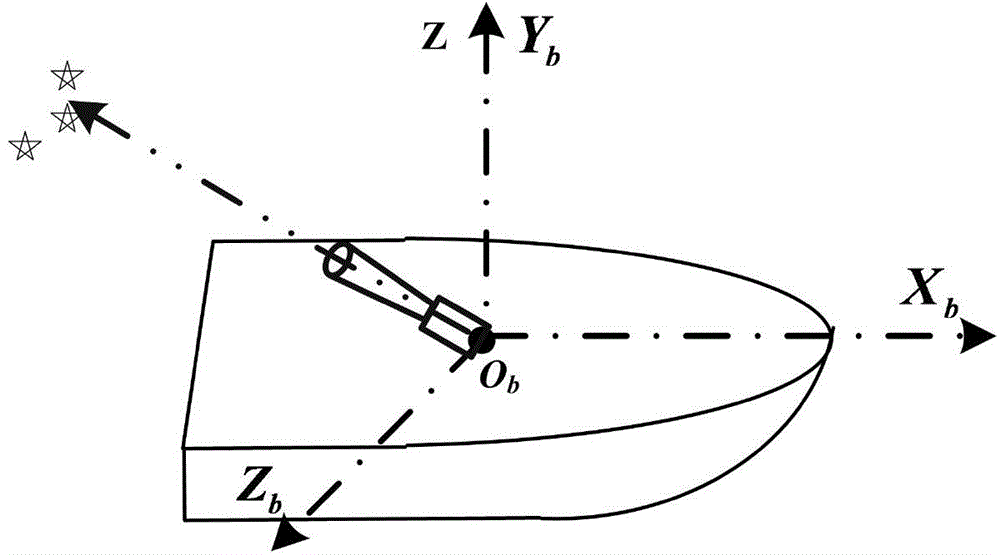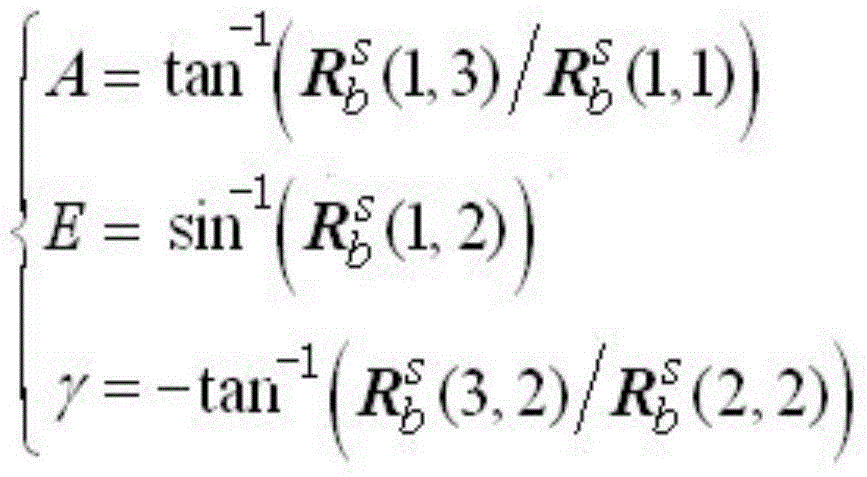Mounting angle calibration method for onboard large-view-field high-precision star sensor
A star sensor and calibration method technology, applied in the direction of instruments, measuring devices, etc., can solve the problems of not being able to give full play to the high-precision measurement advantages of star sensors, affecting the measurement accuracy of star sensors, and low measurement accuracy, so as to reduce complexity , Improve the accuracy, improve the effect of measurement accuracy
- Summary
- Abstract
- Description
- Claims
- Application Information
AI Technical Summary
Problems solved by technology
Method used
Image
Examples
Embodiment Construction
[0019] combine figure 1 and figure 2 Describe this embodiment, the method for calibrating the installation angle of a ship-borne large-field-of-view high-precision star sensor, the method is realized by the following steps: the coordinate system involved in this embodiment has CIS-earth-centered inertial coordinate system (J2000.0 coordinate system ), MT—instantaneous flat equator Earth-centered system, CT—instantaneous true equatorial Earth-centered system, ET—quasi-Earth-fixed coordinate system, CTS—Earth-fixed coordinate system, DP—inertial navigation horizon system, b—deck coordinate system, s— Star sensor coordinate system. figure 1 is the deck coordinate O b -X b Y b Z b Schematic diagram of the installation of the star sensor. o b x b Axis in deck plane, O b Y b In the vertical deck plane, O b Z b Determined by the right-hand rule. figure 2 It is a schematic diagram of transformation from the earth-centered inertial coordinate system of the star sensor to...
PUM
 Login to View More
Login to View More Abstract
Description
Claims
Application Information
 Login to View More
Login to View More - R&D
- Intellectual Property
- Life Sciences
- Materials
- Tech Scout
- Unparalleled Data Quality
- Higher Quality Content
- 60% Fewer Hallucinations
Browse by: Latest US Patents, China's latest patents, Technical Efficacy Thesaurus, Application Domain, Technology Topic, Popular Technical Reports.
© 2025 PatSnap. All rights reserved.Legal|Privacy policy|Modern Slavery Act Transparency Statement|Sitemap|About US| Contact US: help@patsnap.com



